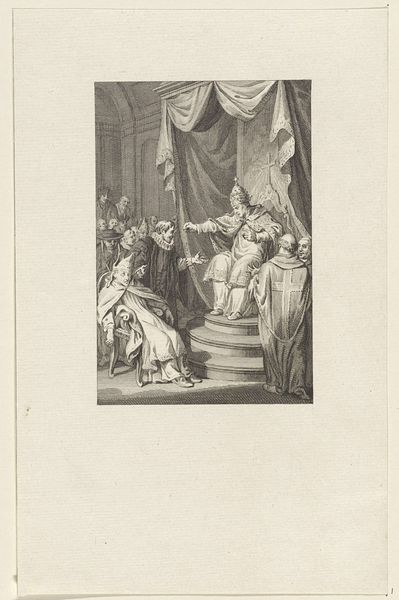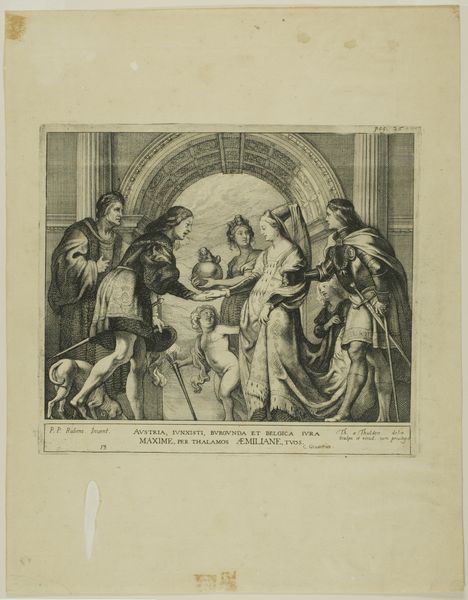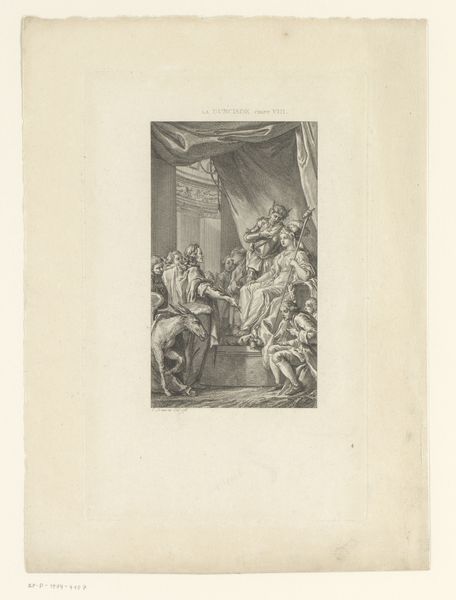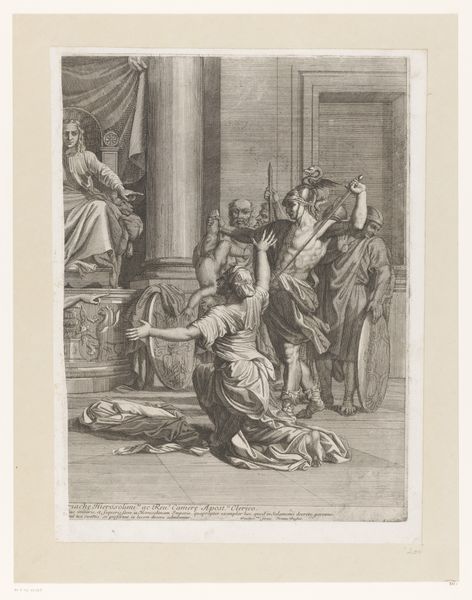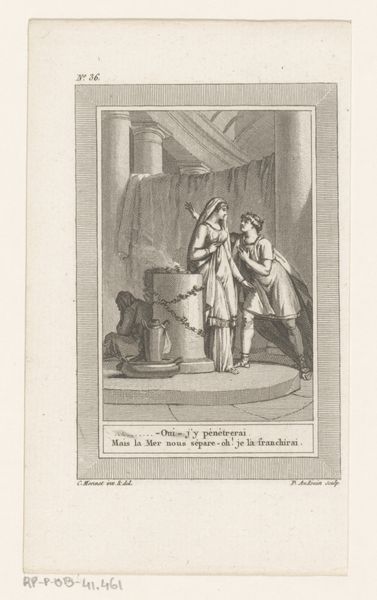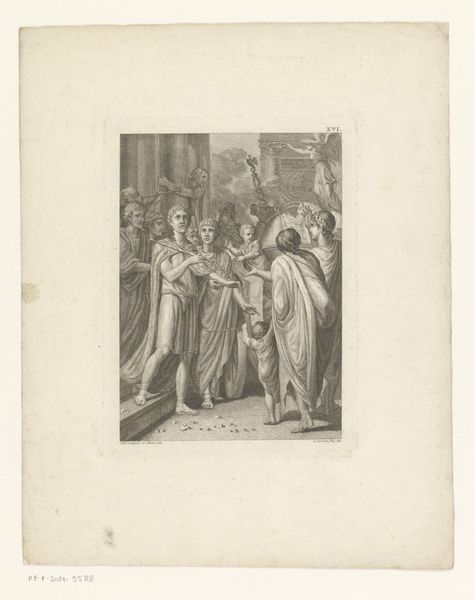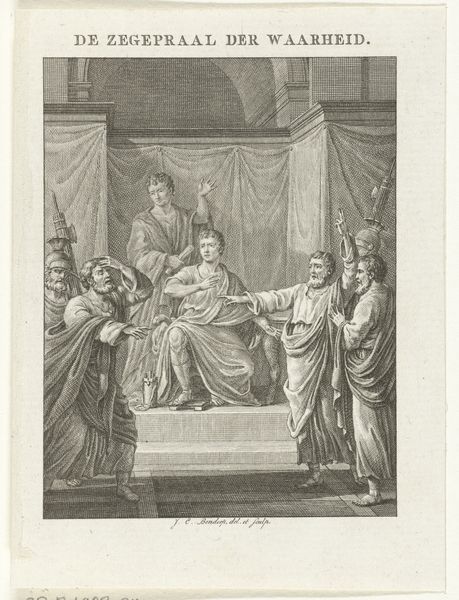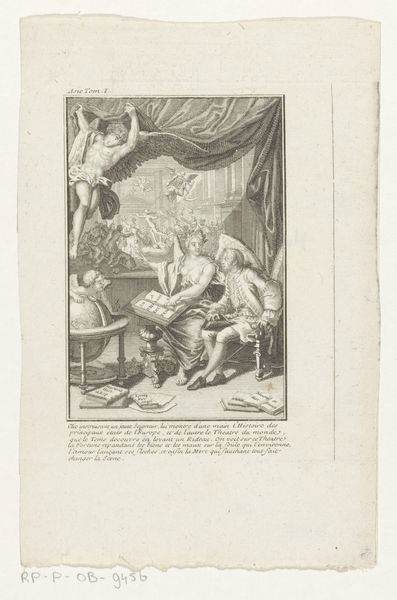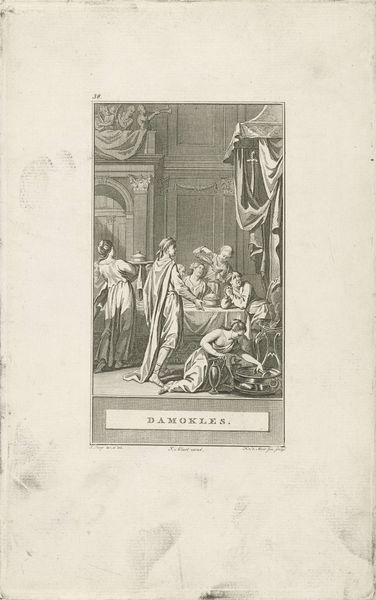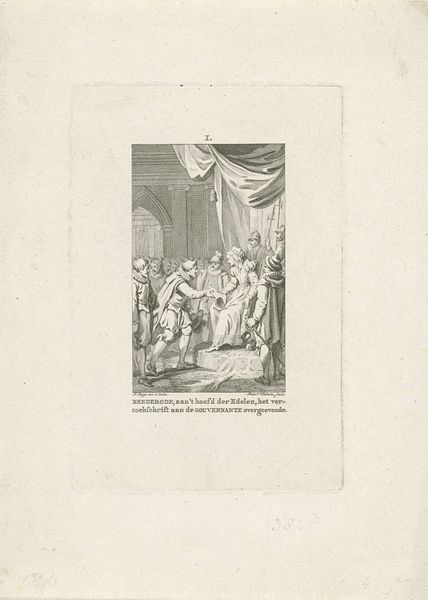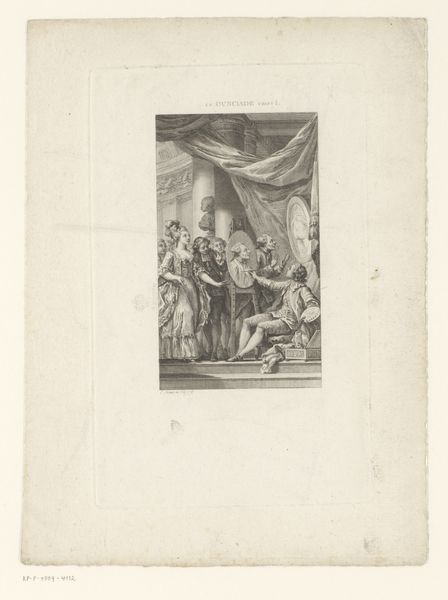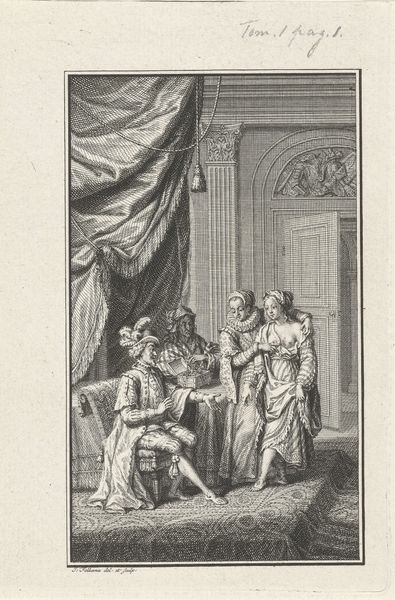
engraving
#
neoclacissism
#
figuration
#
line
#
history-painting
#
academic-art
#
engraving
Dimensions: height 155 mm, width 93 mm
Copyright: Rijks Museum: Open Domain
Editor: So, here we have "Three Judges," an engraving made in 1801 by Pierre Audouin. The detail achieved with just lines is fascinating, almost stark. What strikes me is how the engraver makes the idea of Justice itself so tangible. What's your take on this artwork? Curator: For me, it's primarily about the socio-economic implications of image production and its distribution. Engravings such as these were, at the time, key vectors in disseminating ideology. This image—observe the stark contrast between the elite judges and the pleading common folk—was likely produced in workshops. Who commissioned it? And how was this type of imagery consumed by different social classes at that time? The labor invested, the copper plate used...these are all pieces of a material puzzle about cultural production. Editor: That's interesting; I hadn’t really considered the material side of it. How did the choice of engraving specifically impact its reach and influence? Curator: Engraving allowed for relatively inexpensive reproduction. Think about the access it gave people to concepts of power, in the hands of the bourgeoisie, perhaps even trickling down through print culture to inform civic responsibilities. This work is a commodity as well as an aesthetic object. Editor: So it’s not just about the scene depicted but about who could access the image and the broader political environment surrounding its creation and circulation? Curator: Precisely. Considering it through a materialist lens really illuminates the ways in which art objects are always deeply enmeshed within material culture and political economy. Editor: I see. Thanks, that gives me a new perspective. Thinking about the historical context alongside the labor that went into creating it has changed my view quite a bit! Curator: Indeed, by engaging the socio-economic contexts of art making, we bring it to life and render visible the hidden hands that crafted and carried its message.
Comments
No comments
Be the first to comment and join the conversation on the ultimate creative platform.
